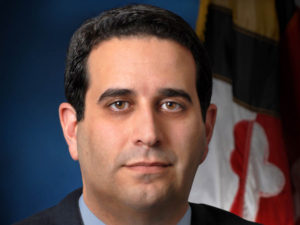Medicaid Implications of the President’s FY 2017 Proposed Budget
The National Association of Medicaid Directors has published a detailed memo outlining how President Obama’s proposed FY 2017 would affect Medicaid.
See that memo  here.
here.
The National Association of Medicaid Directors has published a detailed memo outlining how President Obama’s proposed FY 2017 would affect Medicaid.
See that memo  here.
here.
The first two years of major expansion of access to health insurance under the Affordable Care Act did not produce the significant reduction in hospital ER visits that many expected.
Or so reports a new study from the Centers for Disease Control and Prevention.
According to the CDC, even though eight million people gained health insurance under the health reform law in 2013 and 2014, ER visit rates changed little.
 Still, the CDC survey found some progress: visits among Medicaid patients and the uninsured fell slightly, although Medicaid patents still frequent hospital ERs more than the privately insured.
Still, the CDC survey found some progress: visits among Medicaid patients and the uninsured fell slightly, although Medicaid patents still frequent hospital ERs more than the privately insured.
Among those who did visit the ER, many said their primary care practice was not open at the time or that the ER was the only provider to which they felt they had access to care. In addition, many who made ER return visits reported doing so because of local government reductions of behavior health services options.
Because they are located in low-income communities, Pennsylvania safety-net hospitals typically have far more ER visits than the average hospital.
Learn more about changing rates of ER visits during the first years under the Affordable Care Act in this Fierce Healthcare article or go here to see the CDC report Reasons for Emergency Room Use Among U.S. Adults Aged 18–64: National Health Interview Survey, 2013 and 2014.
The Pennsylvania Department of Human Services has launched a new online portal to facilitate provider enrollment in the state’s Medicaid program.
 According to DHS officials, the new portal will enable the state to enroll providers electronically and automate the provider enrollment process. Under the new approach, documents previously transmitted by mail or fax will be uploaded to the portal, providers will be able to view the status of their application, and the time needed to review and process provider applications will be reduced.
According to DHS officials, the new portal will enable the state to enroll providers electronically and automate the provider enrollment process. Under the new approach, documents previously transmitted by mail or fax will be uploaded to the portal, providers will be able to view the status of their application, and the time needed to review and process provider applications will be reduced.
Learn more about the new Medicaid provider portal from this state news release.
Medicare disproportionate share (Medicare DSH) hospitals that qualify for the federal 340B prescription drug discount program have lower Medicare Part B drug costs than other Medicare providers.
So concludes a new study performed for 340B Health, an association that represents more 1100 public and non-profit hospitals and health systems that participate in the 340B drug pricing program.
According to the organization 340B Health,
Medicare pays disproportionate share hospitals in the 340B drug discount program on average 13 percent less for separately payable drugs reimbursed through Medicare Part B. This is in comparison to what it pays other hospitals and physician practices in the Part B market. The study also shows that 340B DSH hospitals are treating more vulnerable patients than other providers in terms of race, age, disability, and dual eligibility.
The study also found that 340B-eligible hospitals are
 All of Pennsylvania’s safety-net hospitals are Medicare DSH hospitals and many participate in the 340B prescription drug pricing program as well.
All of Pennsylvania’s safety-net hospitals are Medicare DSH hospitals and many participate in the 340B prescription drug pricing program as well.
For a closer look at the study and its findings, go here to see a 340B Health news release on the study and go here to see the study Analysis of Separately Billable Part B Drug Use Among 340B DSH Hospitals and Non-340B Providers.
The U.S. Government Accountability Office has recommended changes in how the federal government matches state Medicaid funding for its share of overall Medicaid spending.
 In testimony submitted to the House Energy and Commerce Committee’s Health Subcommittee, GAO reminded Congress that in the past
In testimony submitted to the House Energy and Commerce Committee’s Health Subcommittee, GAO reminded Congress that in the past
…GAO has examined multiple concerns regarding how the FMAP [federal medical assistance formula] allocates funds among states, including during times of economic downturn, and has suggested improvements.
In particular, the GAO is concerned about how the FMAP formula’s use of per capita income in targeting federal Medicaid matching funds may not accurate reflect economic conditions at the state level, especially during economic downturns, and fail to respond to states’ individual needs during those downturns.
In response to these concerns, the GAO suggested
…that Congress could consider an FMAP formula that targets variable state Medicaid needs and provides automatic, timely, and temporary assistance in response to national economic downturns.
For a closer look at what the GAO investigated, what it concluded, and what it recommended to Congress, go here to see the GAO report Medicaid: Changes to Funding Formula Could Improve Allocation of Funds to States.
The Wolf administration is floating a proposal that would end medical balance billing in situations in which out-of-network providers are involved in the delivery of care patients receive from providers they believe to be in their health insurer’s provider network.
Such situations typically arise when patients receive inpatient care at hospitals they know to be within their insurer’s provider network but some of the professionals involved in providing that care are not part of that network.
 The results can be large bills for services their insurers do not cover.
The results can be large bills for services their insurers do not cover.
The Pennsylvania Insurance Department has published draft legislation to address such balance billing and is seeking public comment on the proposal. See that draft legislation here.
Taking advantage of the Affordable Care Act, Pennsylvania expanded its Medicaid program a little more than a year ago. Now, Department of Human Services Secretary Ted Dallas reflects on that year, offering statistics on how many people have taken advantage of enhanced access to Medicaid coverage, who those people are, and where they live.
 Secretary Dallas also offers his perspectives on how the transition to the expanded Medicaid program went and how the new program differs from the old.
Secretary Dallas also offers his perspectives on how the transition to the expanded Medicaid program went and how the new program differs from the old.
Read Secretary Dallas’s report here, on the Wolf administration’s blog.
On Tuesday, February 9, Pennsylvania Governor Tom Wolf presented his proposed FY 2017 budget to the state legislature.
That budget proposal calls for changes in some current Medicaid spending, including reductions of some supplemental payments and the elimination of others, as well as changes in funding the state’s share of Medicaid and the rate at which the federal government will match Pennsylvania’s own spending on Medicaid in the coming year.
 In addition, the budget calls for new and increased spending in selected areas within the purview of the state’s Department of Human Services and Health Department.
In addition, the budget calls for new and increased spending in selected areas within the purview of the state’s Department of Human Services and Health Department.
SNAP has prepared a detailed memo outlining the potential implications of the proposed FY 2017 budget for safety-net hospitals. The memo also addresses the complications posed by the state’s incomplete FY 2016 budget. Representatives of safety-net hospitals may request a copy of this memo by using the “contact us” link at the top of this screen.
In many cases, Medicaid disproportionate share payments (Medicaid DSH) are being made to hospitals that do not necessarily serve especially large proportions of Medicaid and other low-income patients.
So concludes a new report from The Medicaid and CHIP Payment and Access Commission (MACPAC), is a non-partisan legislative branch agency that performs policy and data analysis and makes recommendations to Congress, the Secretary of the U.S. Department of Health and Human Services, and the states on issues affecting Medicaid and the State Children’s Health Insurance Program (CHIP).
According to a new MACPAC report,
Medicaid DSH payments provide substantial support to safety-net hospitals by helping to offset uncompensated care costs for Medicaid and uninsured patients. In 2014, Medicaid made a total of $18 billion in DSH payments ($8 billion in state funds and $10 billion in federal funds). About half of all U.S. hospitals receive such payments, with most going to hospitals that serve a particularly high share of Medicaid and other low-income patients, known as deemed DSH hospitals. But more than one-third of DSH payments are made to hospitals that do not meet this standard.
 To remedy this problem, MACPAC recommends more and better data collection, noting that
To remedy this problem, MACPAC recommends more and better data collection, noting that
The current variation in state DSH allotments stems from the variations that existed in state DSH spending in 1992.
Medicaid DSH has long been a subject of great interest to Pennsylvania’s safety-net hospitals because, serving so many Medicaid and low-income patients, they are the very providers for which Medicaid DSH payments have always been intended.
The MACPAC analysis Report to Congress on Medicaid Disproportionate Share Hospital Payments covers a broad range of Medicaid DSH-related issues. Find it here, on the MACPAC web site.
Under a new regulation unveiled by the Centers for Medicare & Medicaid Services, physicians and other authorized providers now must document their face-to-face encounters with patients when they are authorizing home health services but those encounters can be conducted through telehealth.
 This approach, already part of the Medicare program, applies only to Medicaid fee-for-service patients and not to those served by managed care plans.
This approach, already part of the Medicare program, applies only to Medicaid fee-for-service patients and not to those served by managed care plans.
In addition, the rule regulates how recently providers must have their encounters with patients when prescribing home health services and provides those services in settings other than the home.
For a closer look at the new regulation, see this Fierce Healthcare article and this CMS fact sheet.